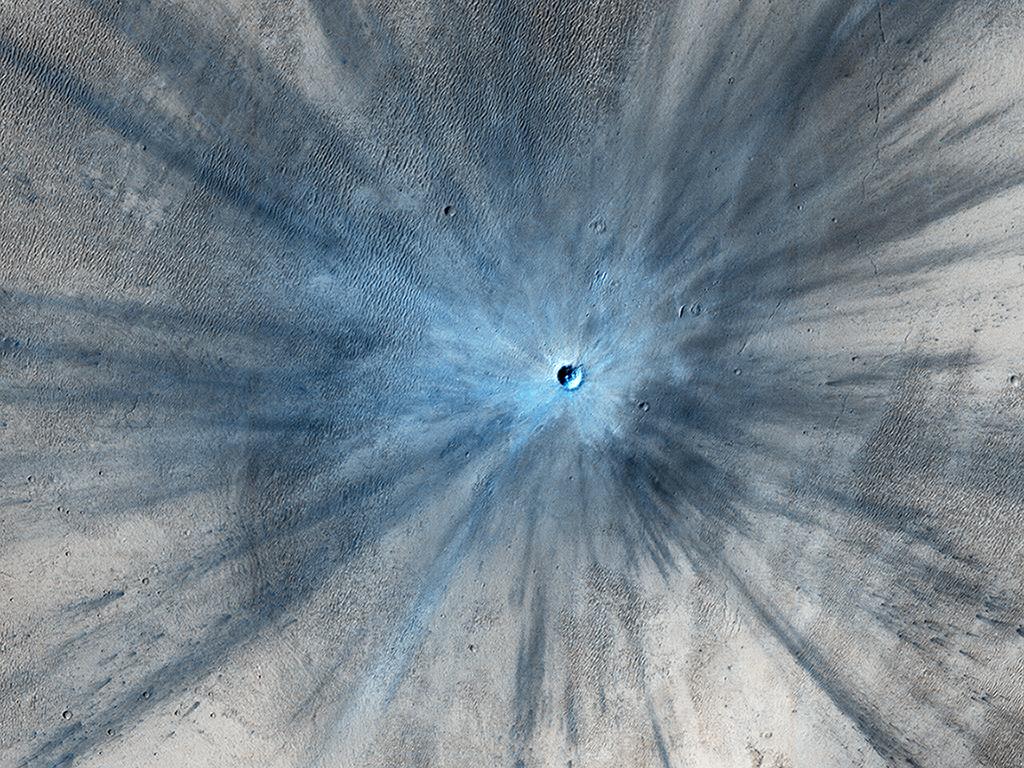
A NASA spacecraft has snapped a stunning photo of a fresh Martian crater that was gouged out of the Red Planet just in the last three years or so.
The new photo by NASA's Mars Reconnaissance Orbiter (MRO) was captured by the probe's powerful HiRISE camera on Nov. 19, though the space agency unveiled the image on Wednesday (Feb. 5). Scientists know the feature formed sometime between July 2010 and May 2012, because other MRO observations show big changes in the area between those two dates.
"The crater spans approximately 100 feet (30 meters) in diameter and is surrounded by a large, rayed blast zone," NASA officials wrote in a description of the new image. "Because the terrain where the crater formed is dusty, the fresh crater appears blue in the enhanced color of the image, due to removal of the reddish dust in that area."
The asteroid or comet that created the crater — which sits at 3.7 degrees north latitude and 53.4 degrees east longitude on Mars — ejected material as far as 9.3 miles (15 kilometers) away from the impact site, officials added.
Such craters are not rare on Mars, which has been bombarded by space rocks for eons.
"Before-and-after imaging that brackets appearance dates of fresh craters on Mars has indicated that impacts producing craters at least 12.8 feet (3.9 meters) in diameter occur at a rate exceeding 200 per year globally," NASA officials wrote. But, they added, "few of the scars are as dramatic in appearance as this one."
The $720 million Mars Reconnaissance Orbiter mission launched in August 2005 and entered orbit around Mars in March 2006. The spacecraft has been observing the Red Planet with its suite of powerful instruments ever since, giving scientists their best-ever looks at the surface of this alien world.
Get the world’s most fascinating discoveries delivered straight to your inbox.
MRO also serves as a crucial communications link between mission control and NASA's currently operating Red Planet rovers, Opportunity and Curiosity.
Follow Mike Wall on Twitter @michaeldwall and Google+. Follow us @Spacedotcom, Facebook or Google+. Originally published on Space.com.




